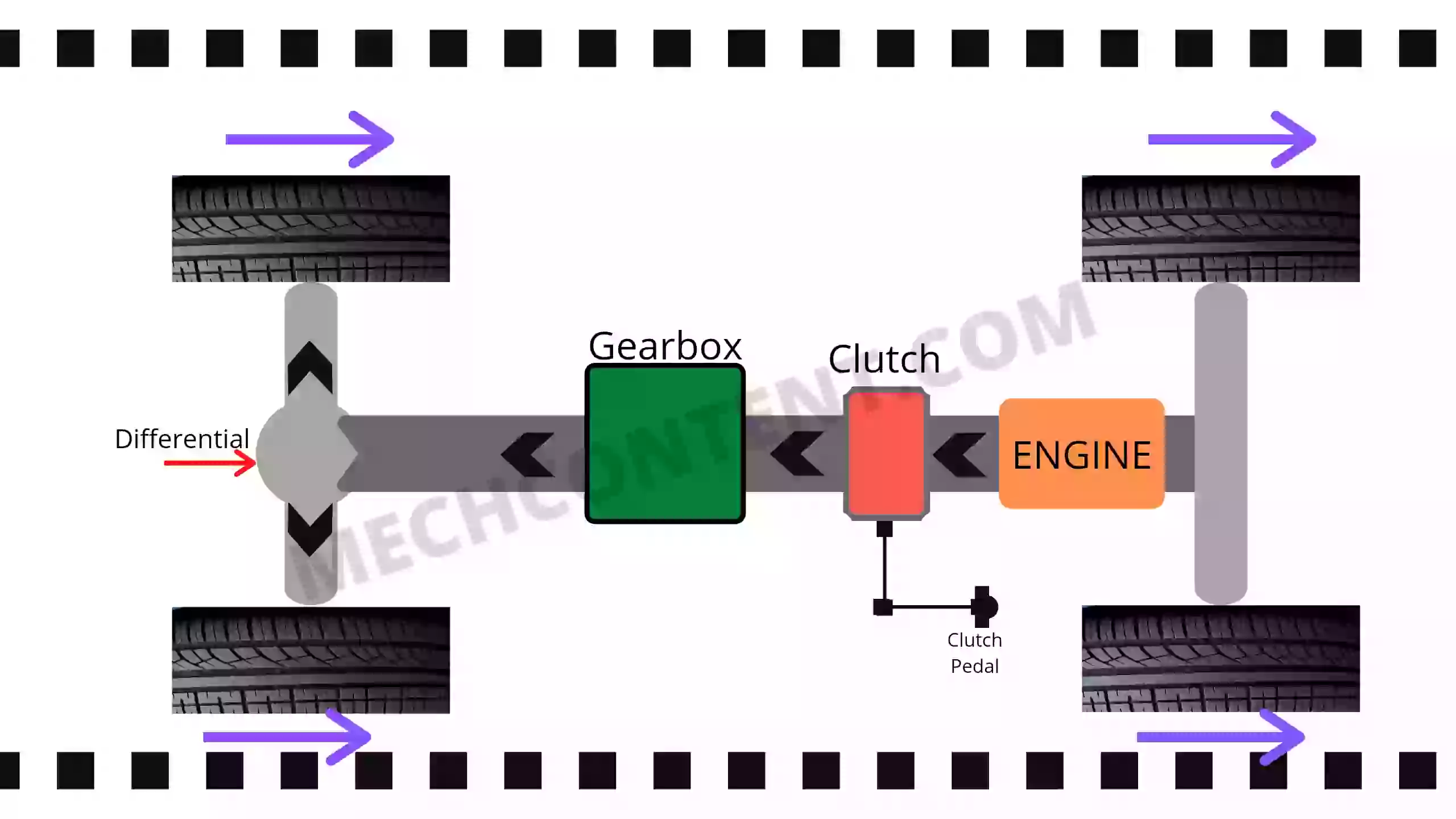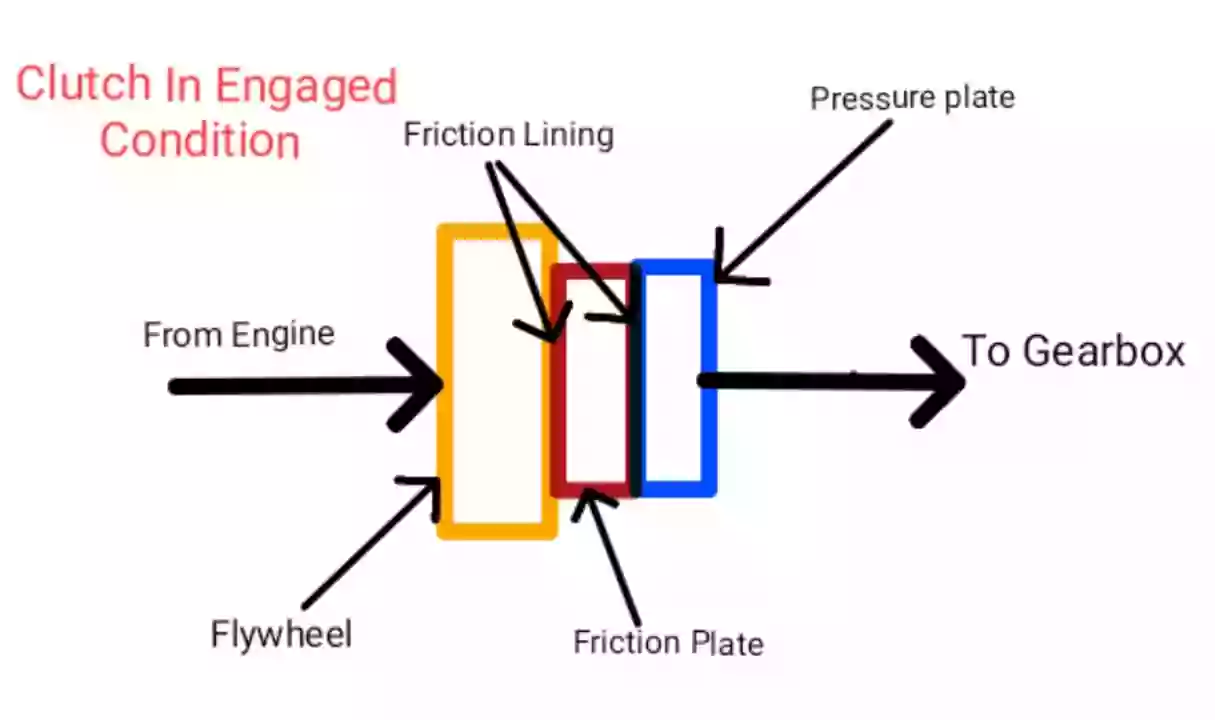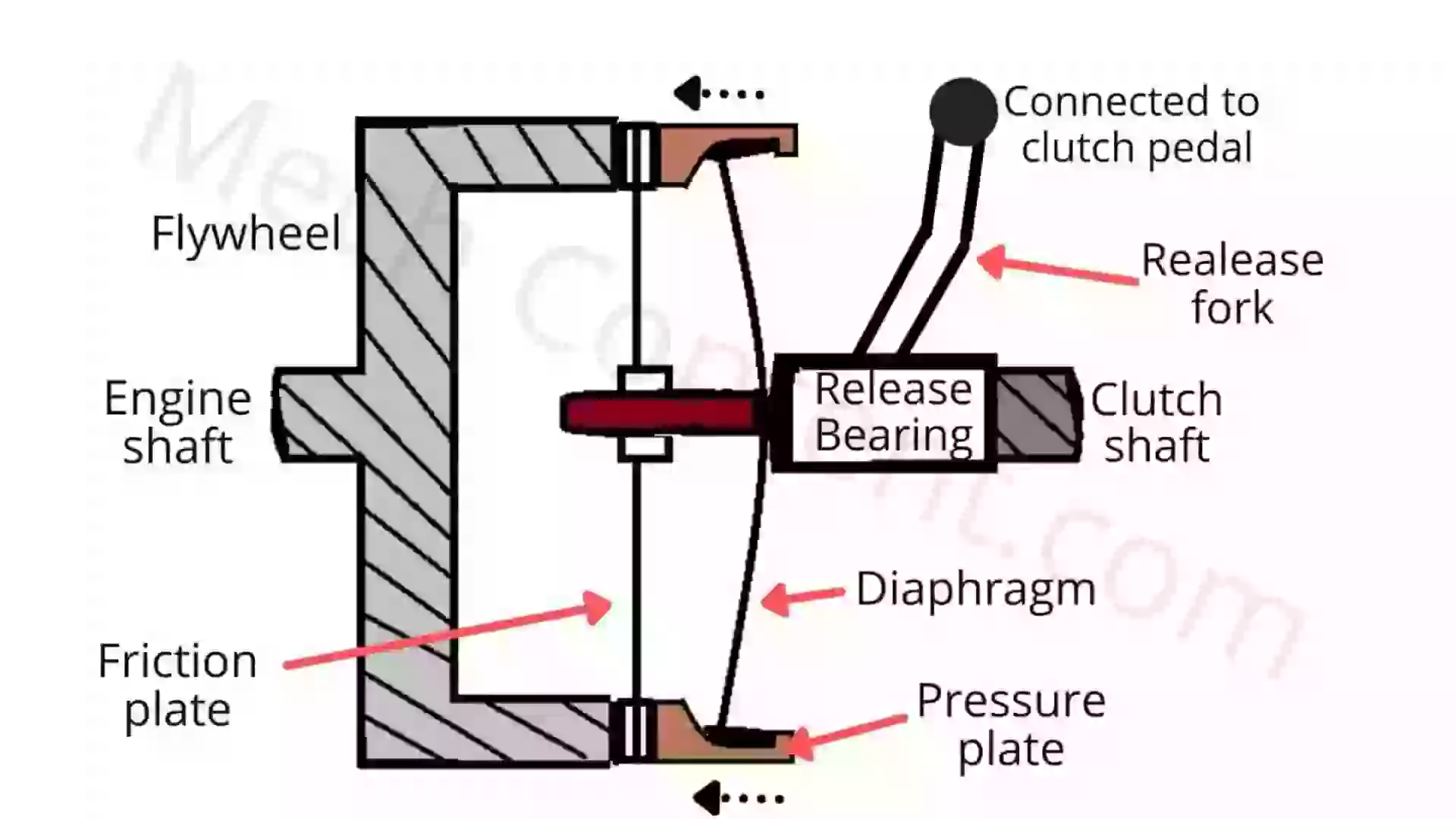What is an Automobile clutch?
The Automobile is a device used to Engage and disengage the Power Transmission from the Driver Shaft (Engine Shaft) to the Driven shaft (Gearbox shaft) with the help of a Clutch pedal.
It is located between the Engine & Gearbox as shown in the below figure.

When the Automobile Clutch Engages, the power gets transmitted from the Engine to the Gearbox to propel the automobile. When the Clutch disengages the power does not get transmitted from the Engine to the Gearbox.
In simple language:- When Vehicle Running = Clutch is in engaged condition = Power is transmitting from Engine to Gearbox.
When the Driver presses the Clutch pedal for Gear shifting or to slow down the vehicle = Clutch is in Disengaged condition = Power is not transmitting from the Engine to the Gearbox.
In this article, we’re going to discuss:
- Functions of clutch:
- Working principle of clutch:
- Construction of Automobile clutch:
- Working of Automobile clutch:
- Types of clutch:
Functions of clutch:
The clutch is an important part of the vehicle which has the following functions:-
- To smoothly transmit power from engine to gearbox when a vehicle is running.
- To shift up or down the gears without damaging the gearbox when a vehicle is running or stationary.
- To engage or disengage the power transmission from the engine to the gearbox as per requirement.
- During emergency braking, a clutch is necessary to sudden slow down the vehicle.
Working principle of clutch:

Automobile clutch works on the Principle of friction. The Friction is responsible for the power (torque) transmission from the Flywheel to the Gearbox.
The friction plate has a friction surface on both sides and the pressure plate has a friction surface on one side. Hence during the running condition of the vehicle, the pressure plate presses the friction plate against the flywheel. Hence due to friction between these three each other, power starts to transmit from the Flywheel to the output shaft.
Construction of Automobile clutch:
A clutch consists of the following components:-
- Flywheel
- Friction plate (Clutch plate)
- Pressure plate
- Diaphragm (Spring)
- Release bearing
- Release fork

1) The flywheel is connected to the engine crankshaft and hence rotates at the speed received from the engine crankshaft.
2) A plate which having Friction lining on both sides surfaces is known as a Friction Plate (Also known as a Clutch plate) which is located between the flywheel and pressure plate. The friction Plate is get pressed against the Flywheel under the axial force exerted by a pressure plate.
3) The pressure plate has a friction lining on one side (Side which comes in contact with the friction plate). The pressure plate is connected to the vehicle clutch pedal through a linkage. As per the movement of the clutch pedal, the pressure plate applies or releases the pressure on the friction plate.
4) In the Engaged condition of the clutch, the flywheel, friction plate & pressure plate are united due to the axial force exerted by the pressure plate.
5) A power transmission by automobile clutch depends upon the following factors
- Applied Pressure (F)
- Coefficient of Friction (μ)
- Area of Friction Surfaces
6) The Power Transmission by automobile clutch is Expressed as (T):-
T = μ × F × R
Where,
μ= Coefficient of Friction
F= Pressure Applied on Friction Plate
R= Radius of Friction Surface
Working of Automobile clutch:
The Automobile clutch is normally in the engaged position. So let’s see the working of the automobile clutch first in the Disengagement position and then Engagement position:-
Disengagement:-
While the vehicle is running, the clutch is in the engage position means the pressure plate presses the friction plate on the flywheel. Hence due to friction between these plates, power continuously transmits from the engine to the gearbox.
When the driver presses the clutch pedal to slow down the vehicle or change the gear, the pressure plate removes the pressure on the friction plate. Hence friction plate gets detached from the flywheel. Hence power transmission from the engine to the gearbox stops. hence in such a way Clutch disengages.
Engagement:-
After shifting the gear or after slowing down the vehicle, when the driver wants again speed up the vehicle, the driver releases the clutch pedal, and eventually pressure plate again presses the friction plate on the flywheel. Hence due to friction between these plates, power again starts to transmit from the engine to the gearbox. So in such a way, Clutch engages.
Types of clutch:
The different types of automobile clutches are as follows:-
1) Friction clutch
A) Cone clutch
i) Internal Cone
ii) External Cone
B) Plate Clutch
i) Single Plate
ii) Multi Plate
a) Dry
b) Wet
C) Diaphragm Clutch
D) Centrifugal Clutch
E) Semi-centrifugal Clutch